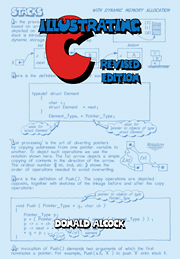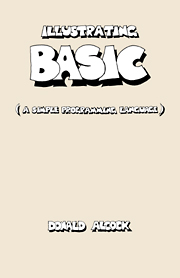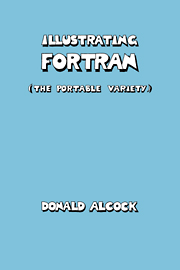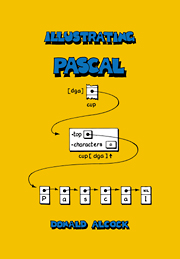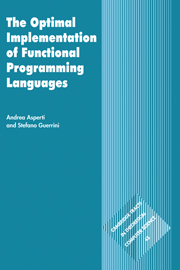Illustrating C
Reviewers and readers have enthused over previous 'Illustrating' books from the pen of Donald Alcock; his unique formula using graphics and calligraphy to explain what else would take a thousand words is here applied to illustrate ANSI C. As usual, Alcock emphasizes learning by writing programs and working through them. Plenty of real programs are used to good effect, so that by the end of the book advanced topics have been described by means of increasingly sophisticated examples. A feature of the layout is the double-page spread: each of these covers a particular topic making the book useful as a reference manual. Moreover each spread is made as self-contained as is reasonably possible - ideal for browsing. For the programmer with a grounding in one language, such as FORTRAN, this book will give an excellent introduction to standard C - one that emphasizes the self-discipline needed to write portable programs. This revised edition has benefited from many corrections and updates, and has now been printed in a wide-page format for ease of use.
- Established Press author (Basic sold over 170,000 copies)
- Alcock's style of handwritten book is a big success
- Review in Computer Journal of Pascal expressed the wish that he would tackle C at some time
- 'Completes the set' of fundamental computer languages
- C is gaining ground on FORTRAN as the leading language for students
Product details
June 1994Paperback
9780521468213
228 pages
248 × 183 × 20 mm
0.442kg
Available
Table of Contents
- Preface
- 1. Introduction
- 2. Concepts
- 3. Components
- 4. Control
- 5. Organization
- 6. Pointers, arrays, strings
- 7. Input, output
- 8. Structures, unions
- 9. Dynamic storage
- 10. Library
- 11. Summaries
- Bibliography
- Index.

